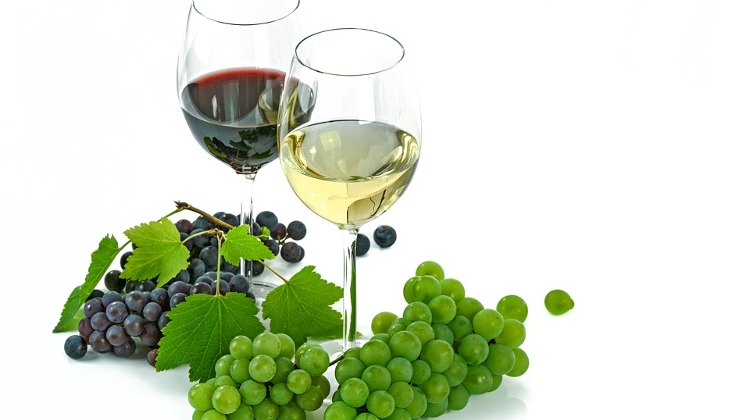Natural Wine Begins to Flow in Hungary
- 8 Dec 2021 11:36 AM
- Budapest Business Journal

Wine experts and lovers have been debating the topic furiously on social media, with many dismissing natural wines as terrible and nothing more than a fad fueled by ignorant hipsters, who claim that conventional winemakers are killing us.
However, I don’t think that natural wine is a flash in the pan, and it is very much in demand by an enthusiastic younger generation, promising a certain X-factor for the curious members of Generation X and beyond.
The natural wine movement is really about returning to vinifying grapes the way they used to be handled, before the advent of technology and synthetic herbicides/pesticides came onto the scene and revolutionized winemaking.
You could, of course, argue that wine was made all the better, fresher, fruitier, and certainly much cleaner, by technological advances, that pesticides and herbicides are used for good reason and, furthermore, in amounts that have zero impact on health.
On the other hand, there surely exists plenty of room for different approaches, and a return to earlier ways also reflects what’s going in other walks of life.
While larger wineries cannot really afford to take risks and have to focus on pumping out a faultless, uniform product to satisfy the demands of shareholders, owners, consumers, and distributors alike, smaller producers often have the freedom to experiment.
The Kristinus Borbirtok in the Balatonboglár wine region does buck this trend and is an example of a larger winery successfully pursuing a natural approach.
One trend I’ve been witnessing in Hungary is smaller cellars moving towards organic and biodynamic growing, and in some cases going the whole natural hog, which essentially means doing very little to the wine.
Back to Basics
More wineries are going back to basics, adopting a minimum interventionist approach to winemaking, neither adding nor taking away from the wine.
Not adding to the wine implies spontaneous fermentation from the yeasts inherent on the grapes and in the cellar, and the use of no additives other than a bit of sulfur to prevent the wine from spoiling; hardcore natural vintners often eschew even the use of this naturally-occurring chemical.
At a blind tasting of natural wines that I recently attended, to which participants all brought a bottle, a non-natural wine somehow slipped into the line-up, and it really did stick out, despite the actual natural wines all being clean and without unpleasant, dirty notes.
For me a natural wine should be clean, yet also have a certain funkiness going on. It really is a whole “New Old” category and needs to be treated as such. When they’re bad, natural wines can be awful, but when they’re good, they certainly warrant serious attention.
I recently had the opportunity to visit two of Hungary’s leading lights of natural wine, and was greatly impressed by what I saw and tasted.
One Hungarian winemaker who has gone entirely sulfur-free is Levente Major, owner and winemaker at Levente Pince, in the village of Abasár (88 km northeast by road) in the Mátra wine region. His wines, from the Olaszrizling, Riesling and Kékfrankos varieties, are to my palate concentrated, full of character and very pleasant to drink.
He even makes a natural wine out of Irsai Olivér, which I always considered to be a technologically-made wine; his does capture the essence of this aromatic grape, but with plenty of richness and oily texture.
Most of his wines go abroad, as foreign distributors get and really appreciate what he’s doing, while the local market is put off by what are somewhat premium prices of around HUF 6,000 a bottle. That seems justified, nevertheless, given the extra yards he puts in to grow grapes via only organic treatments.
“Grapes are every day work, you can’t just come up from Budapest occasionally,” he says.
Problem Deer
Major has recently bought 10 hectares of vines in one block on Sár hegy, but deer have gobbled up seven hectares worth of the 2021 vintage, primarily down to his refusal to spray conventional chemicals. In broad daylight, we could see a brace of deer chillin’ and chewin’ among the vines.
He is planning to build a fence to keep the animals out. At first glance, with his big beard, you might mistake him for a hipster, but do that at your peril; also the headmaster of the local school, he tells me that he is into Norwegian black metal.
Heading south to the often overlooked Hajós-Baja wine region, the bijou Sziegl Pince is located in Hajós (157 km south of Budapest), in what is considered to be the world’s biggest cellar village, Hajósi Pincefalu, in itself a must-see for wine lovers.
Balázs Sziegl, a Hajós native, runs the winery together with his wife, Petra, who hails from the next village, but the pair actually met while studying viticulture and viniculture in Budapest.
“We don’t use any additives, neither do we take anything out of [the wines]. Wines created the natural way tell you about their land of production and the personality of the winemaker,” their website says.
We arrived at the Sziegl winery after a visit to the 800,000-bottle-a-year Koch Borászat. Sziegl is full of admiration of the work done by the larger local player, and the two winemaking families are on friendly terms.
“I think it’s just a different approach, we can certainly live together,” says Petra. She and Pálma Koch went to the same school. Incidentally, Pálma’s father Csaba, the Hungarian Wine Academy’s Winemaker of the Year in 2019, also makes some exciting organic wines from obscure local varieties.
I quiz Sziegl about when the magic moment to go natural arrived. “It wasn’t a moment, but rather a process. We wanted to reduce the role of the winemaker [to allow the place of growth to express itself], and with every passing year we’ve moved towards this,” he says.
“We didn’t want to compromise and if there’s not a sense of joy in what you’re doing, then the result won’t be good.”
I had heard a lot about the Sziegl Kadarka coming into this tasting, and it is indeed exceptional, or rather, they are, with two single-vineyard bottlings serving up different aspects of the grape variety.
Meanwhile, the Kékfrankos 2020, made from 80% whole-bunch pressing and aged for eight months in 500-liter barrels, has a beautiful deep purple color and oozes violets and blueberries, along with a leathery-balsamic note, plus a bit of a bite on the finish.



























LATEST NEWS IN community & culture